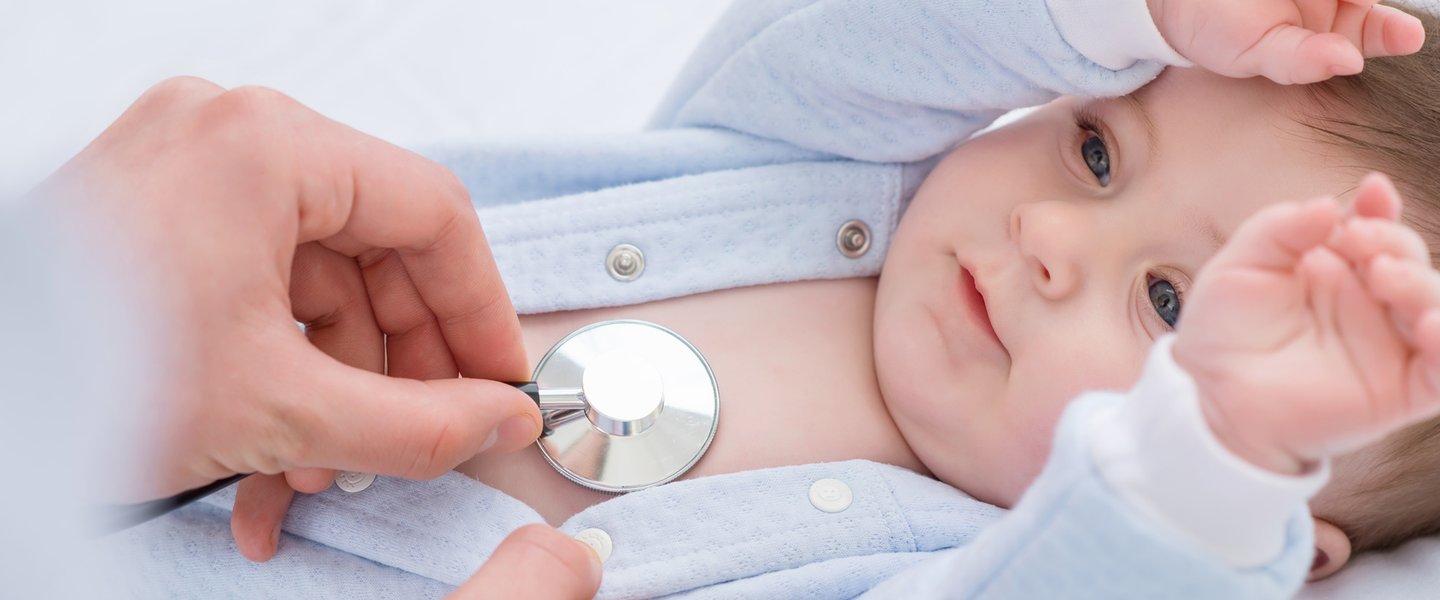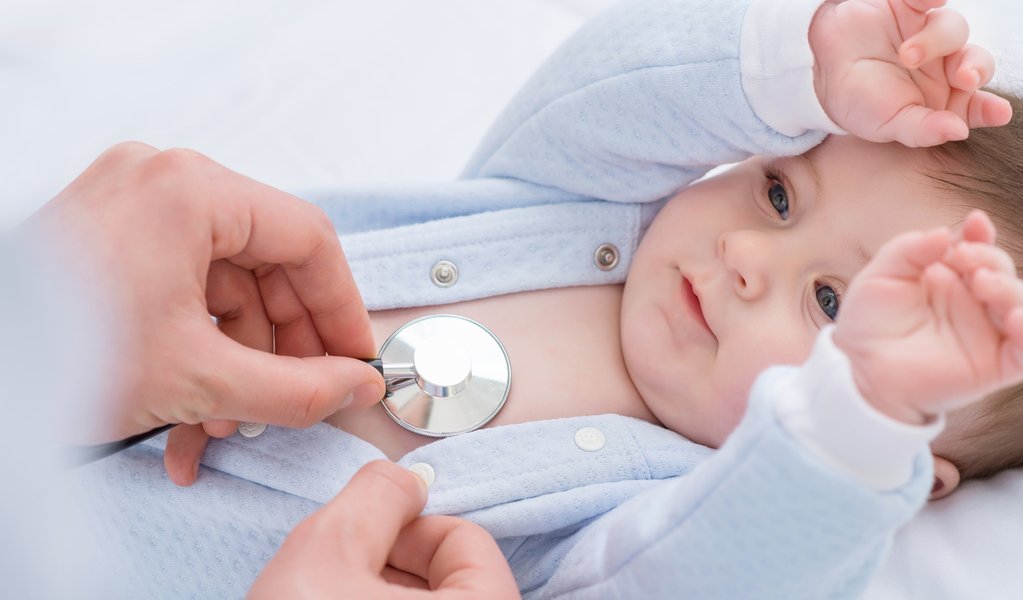Krakow’s ground-breaking 3D foetal heart models
A team of gynaecologists from Krakow have developed a 3D model of the foetal heart thanks to which it will be easier to diagnose the 29 most common heart defects in the womb.
The printed model of the foetal heart is an absolute novelty in medicine which will make it easier not only for Polish doctors, but also for those around the world to diagnose the most common defects of this organ in unborn children. Its creators – Marcin Wiecheć, MD, and Agnieszka Nocuń, MD, of the Department of Gynaecology and Obstetrics of Jagiellonian University and the Perinatology Clinic of the University Hospital in Krakow and Prof. Jacek Kołcz of Heidelberg University – developed it in an innovative way. Not by using a ready image of a sick heart, but on the basis of a library of digital images in 3D and 2D. In his conversation with Poland.pl, Dr Wiecheć explained that the model will help further the three-dimensional understanding, which is crucial in the case of an organ being in constant motion – it contracts and relaxes 150 times per minute , making it very difficult to observe.
Dr Wiecheć saw the need to create a model already at the beginning of his medical career. He noticed that the ultrasonographic diagnostics attracts the lowest number of gynaecologists, mainly due to its complexity. It requires the ability to recognise structures on the screen of the device, which is difficult since the object is moving. While running ultrasound courses for gynaecologists, he realised how difficult it is for doctors to diagnose foetus defects.
“The more so that many of them have never seen such defects, because working in a small district hospital they do not come into contact with such unusual cases as their colleagues from the reference centres which receive the most seriously ill children,” Dr Wiecheć told Poland.pl. He decided to create a model for diagnosing these anomalies and discovered that each of them has unique features thanks to which they can be recognised, even using a scanner with a lower resolution, in which the image is not optimal. The first organ that Dr Wiecheć’s team decided to make more familiar to the doctors was the heart, as it is the most difficult to diagnose.
Today, physicians from around the world are interested in the model developed in cooperation with GRID and Virtual 3D. It allows not only doctors, but also parents of newborns waiting for their surgery to understand defects more easily.
Heart defects are the most common ones to occur in foetal life. Every year, eight in 1000 newborns in Poland have such a defect. 90 percent of them survive the first operation, but in most cases further interventions are necessary. Sometimes, however, it is enough to give the child the right medicine after its birth. Detection of a heart defect even before birth is significant in that such abnormalities often do not produce any symptoms in the first days of the baby’s life. Problems arise only when parents and baby are already home, which hinders fast medical intervention.
Now, the team of Dr Wiecheć is preparing further models of the foetal heart, including for postnatal examination, allowing a surgeon to prepare for surgery. They should be so clear that the type of defects can be noticed even by doctors of specialities far removed from cardiology or gynaecology.
Karolina Kowalska
Key to the foetus heart
“Heart defects have distinctive, unique features due to which they can be diagnosed more easily in prenatal life. We called these important features patterns and analysed them based on the stored ultrasonographic images as 3D volume files. The three-dimensional technique allowed us to precisely introduce these blocks of information in accordance with the principles of anatomy and thanks to this we were able to learn the features of geometric differences for most congenital heart defects. The geometric approach can easily be translated into perception of a doctor performing prenatal ultrasonographic examination,” Marcin Wiecheć, MD, of the Department of Gynaecology and Obstetrics of Collegium Medicum at the Jagiellonian University and the Perinatology Clinic of the University Hospital in Krakow said in conversation with Poland.pl.
The model of foetal heart developed by your team is a breakthrough in the world of prenatal diagnostics. Why does diagnosing defects of this organ in unborn children cause so much trouble for gynaecologists?
Marcin Wiecheć, MD: Interpreting the prenatal image in congenital anomalies has always been a great challenge for doctors and despite enormous progress in this field the group of specialists consulting these difficult cases is not too large. I have been considering the cause of this state of affairs since the beginning of my career in 2000 and came to the conclusion that one of the possible reasons is the lack of three-dimensional look views of the examined structures. For the first years, I did not have this awareness and in retrospect, I did not examine them very carefully. I had access to the first devices with three-dimensional software in 2005. I conduct studies on the interpretation of the image for diagnosis, especially in the field of congenital heart defects, together with Dr Agnieszka Nocuń who has been studying 3D from the very beginning and, in my opinion, this made her professional and scientific development path easier. In my case, the baggage of a two-dimensional view did not allow me to pay attention to the previously mentioned geometric patterns from the very start. The culmination of our observations is the three-dimensional print-out project, which gives an accessible insight to the geometrical differences inherent in the individual types of congenital heart defects.
Our models are designed to stimulate the imagination of a learning doctor in the same way that Lego bricks stimulate child's development. These models are also an invaluable tool for consultation, allowing parents to understand potential problems in the situation where a congenital defect is detected in their child.
You have focused primarily on defects of the heart.
I believe that the study of prenatal ultrasonography should start from the heart, because it is a difficult, but at the same time clear and a logical part of the issue. Not only are different techniques of ultrasonographic imaging combined in this area, the anatomical and functional analysis of a complex organ also appears in the process. We focused on the geometrical aspect, which allows a physician to conduct examinations to detect features within specific defects or groups of defects.
This is particularly important when learning to recognise difficult defects of vascular conus, such as tetralogy of Fallot, d-type or l-type tyletransposition of the great arteries, double outlet right ventricle or the common arterial trunk. By being familiar with geometric patterns, doctors, even at the initial stage of competence, can detect congenital heart defects more quickly. We are working on the analysis of image interpretation on a group of experts and training doctors with regards to the time of visual fixation on individual examined elements and we are recording the conclusions drawn from the examination by the physicians depending on the level of competence. Thanks to training focused on geometrical aspects based on our method using the 3D print-outs we are now able to shorten the time of interpretation of the image to several seconds, which traditionally used to take 30 minutes and sometimes even one and a half hours.
What is the secret behind your method?
Three-dimensional ultrasound as a diagnostic method in the case of prenatal diagnosis of congenital heart defects has its limitations, mainly due to the mobility of the foetus and the not always convenient position needed to provide an effective 3D record depicting the congenital defect. The obstacle lies mainly in the so-called acoustic shadowing due to which the heart is concealed for ultrasound. The obstacle to recording may be the ribs or even a forearm in front of the rig cage leading the three-dimensional record to be ineffective. However, the interpretation becomes simple thanks to the geometric patterns of birth defects. It should be highlighted that physicians who examine the foetal heart are mainly gynaecologists, whose interests do not focus on paediatric cardiology or cardiac surgery. In our case, thanks to active cooperation with associate professor Jacek Kołcz, cardiac surgeon, and Dr Zbigniew Kordon, a paediatric cardiologist, we can discuss the most difficult cases with them. However, within the reality of daily work it is hard to imagine that every foetus will be examined from the cardiologic side by a cardiologist and a cardiac surgeon, from the neurological side by a neurosurgeon, urological by a urologist, bone by an orthopaedist etc. The key is, in my opinion, to support gynaecologists in order to be able to effectively improve detection of congenital defects by them. Experts will not examine every pregnant woman in Poland and it will never be possible. Based on our observations, the concept of geometric patterns of congenital heart defects using the three-dimensional models is a simple and repeatable method which can help the first line doctors.
How did you develop it?
Our idea was to develop three-dimensional models based on our library of 3D and 2D images. Many lecturers in ultrasound for gynaecologists only show the final processed product – the diagnosis. From the very beginning, I tried to show how to reach it in order to help my colleagues in their daily work. During my work teaching prenatal ultrasonography, I always try to imagine the way my colleagues with basic skills interpret the image and I consider how they can be directed in the simplest way to shorten the interpretation process. Three-dimensional models of normal foetal hearts and hearts with congenital defects serve this purpose. I think that with our three-dimensional models of the heart and a large library of ultrasound images we are able to create a situation where the science of diagnosing congenital heart defects will resemble the process when a grandfather teaches his grandson to recognise car brands – on the basis of their shape and characteristics. That is not all, when we know the patterns we will be able to recognise birth defects even with a poorer device and the best conditions of examination. I have been exploring the optimisation of the scanner and the adjustment of the image for as long as three years, so that the image on the screen was the cleanest, and today I know that it is only a supporting element. It is much more important, in my opinion, to understand the geometric relationship of the examined elements which is achieved thanks to three-dimensional print-outs.
Interview by Karolina Kowalska
10.01.2017







